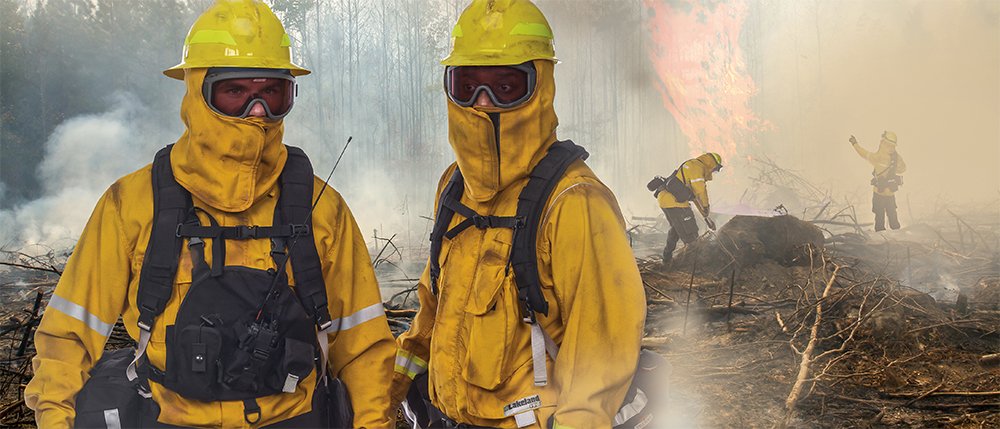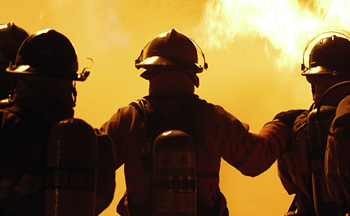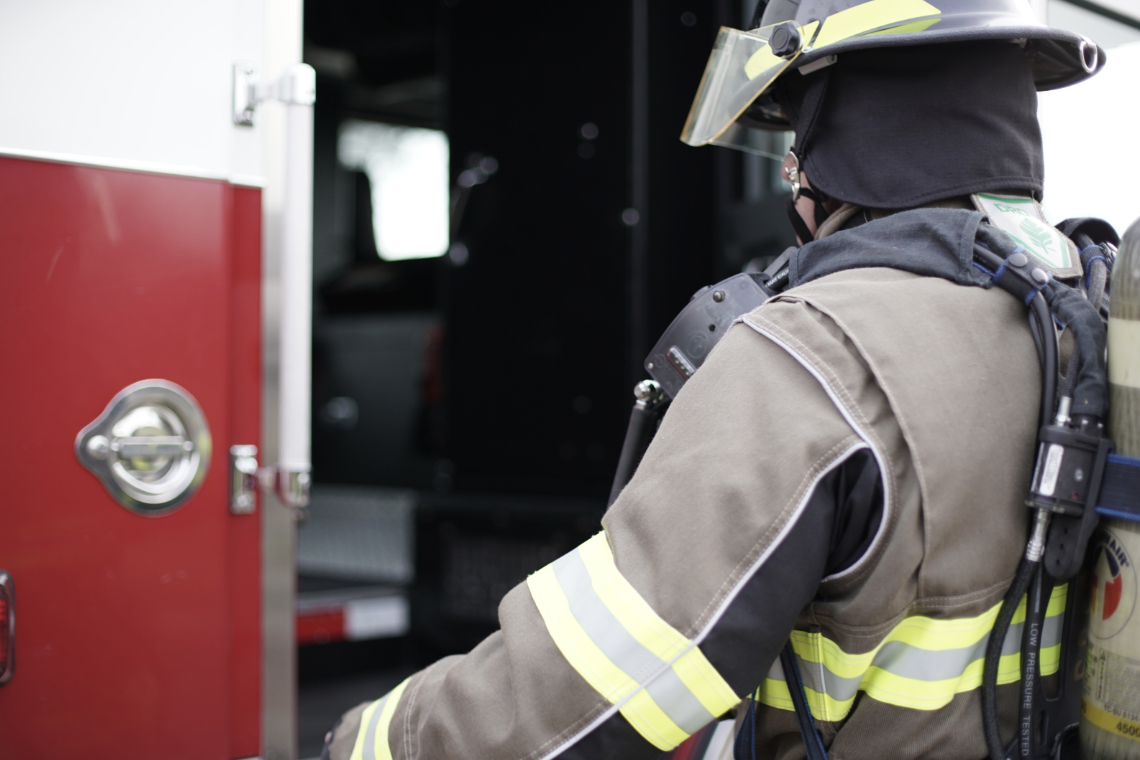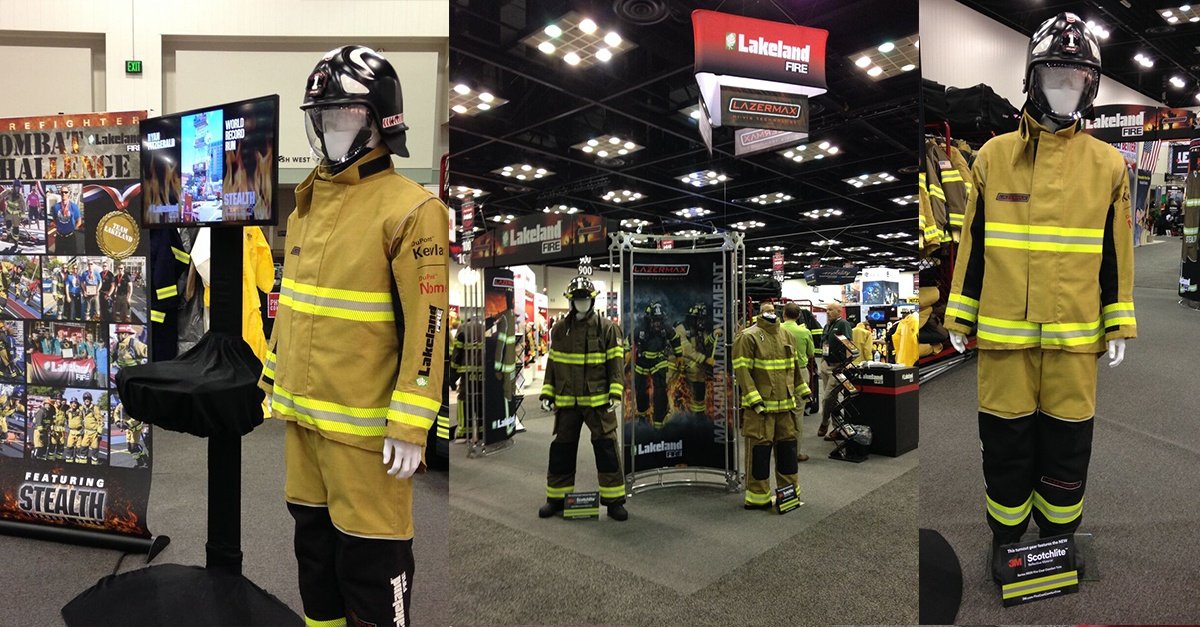Wildland fire gear protects the brave men and women who work tirelessly to combat wildfires, which affect millions of acres of prairie, forests, and vegetation every year.
Data from the National Fire Protection Association shows that annually, more than 50,000 fires burn millions of acres across the U.S.(1) What types of wildfires threaten America’s landscape, and how do you determine the right kind of wildland firefighting gear for the job?
Learn more below about wildland fires in the United States and the right type of wildland gear for your needs.
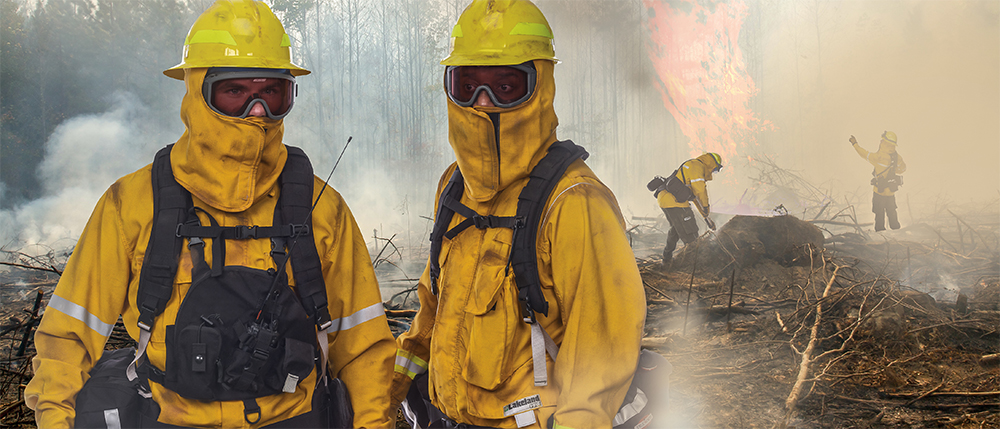
Types of Wildfires in the United States
There are two main categories of fires in the United States: structural fires burn human-made objects and occupied terrain, like buildings, houses, and cars; wildfires, in contrast, are fires that burn vegetation and open land areas.
Wildland fires fall into two distinct categories as well: wildfire and prescribed fire(1).
What is a Wildland Fire?
Wildland fire is a general term describing non-structural fires that often occur in regions with high vegetation and burnable fuel, including trees, grasses, and shrubs.
Wildfires can be termed as either “suppression” or “non-suppression” fires, but the majority of fires are monitored and managed according to an established fire management plan(2).
What is a Prescribed Fire?
A prescribed fire program supports the strategic removal of grasses, shrubs, and trees to restore and maintain ecosystems and limit wildfires’ negative impacts. Prescribed fire is ignited with a detailed plan in place to remove fuels that have built up in a region to prevent the chances of a catastrophic wildland fire(2).
What causes these types of wildfires to ignite?
Almost 90-percent of wildland fires in the United States are caused by people, according to the U.S. Department of Interior(2).
The regions that are considered the most susceptible to extreme wildfire risk based on the number of properties at risk are(3):
- California
- Texas
- Colorado
- Arizona
- Idaho
The risk of fire depends heavily on the conditions of the natural environment, including temperature, humidity, wind, rain, drought conditions, and moisture in the terrain. When these factors combine favorably for fire, it is possible for a wildfire to start, spread, and become difficult to extinguish.
Wildland Firefighting Challenges
Wildland firefighters often find themselves combating fires in challenging terrain. Sparse and expansive woodlands, cliffs, prairie, and dense forests all present unique, physically demanding challenges. Wildland firefighters need to be in peak physical condition in terms of strength and endurance, with the ability to perform difficult tasks, including:
- Carry and use essential firefighting tools (like hoses, axes, radios, etc.).
- Maintain and use both skidders and bulldozers.
- Carry out water bombing operations from helicopters.
- Accomplish difficult physical tasks like cutting trees, digging trenches, and pumping water into burning areas.
- Participate in patrol duties to identify hot spots that could potentially start a new fire.
Because of the profession’s rigors, it is important for wildland firefighters to have wildfire gear and PPE that allows them to maneuver quickly and efficiently regardless of the terrain.
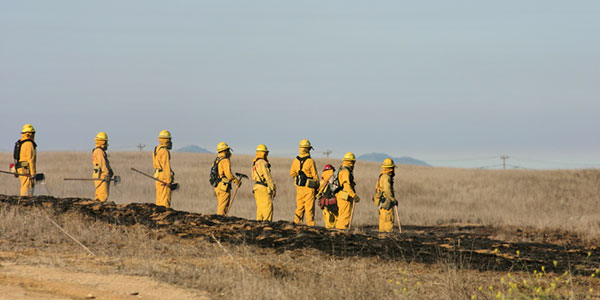
Wildland Fire Gear Required for the Job
Wildland firefighters need to perform all of their tasks while equipped with versatile, comfortable PPE. Every firefighter’s protective gear should meet the following standards:
- Fully protective of the head and body
- Fully protective of the respiratory system
- Versatile enough to be used in different circumstances
- Comfortable enough to be worn for long periods of time
- As lightweight as possible while still meeting safety standards
Lakeland provides fire protection for firefighters in every setting, including wildland firefighting.
Choosing wildland specific fire gear, as opposed to full turnout gear, not only makes managing the challenging forest terrain easier, but it also protects your turnout gear investment. Choosing the right gear for every fire helps support firefighters as they work in each unique fireground setting.
View the attributes of optimal wildland fire gear.
Advanced firefighter turnout gear is critical to protect firefighters from the dangers of fire-related emergencies, but firefighters don’t need a set of full bunker gear on every call.
Learn more about all of the types of fire protective clothing available from Lakeland.
At Lakeland, our priority is to create protective garments that protect people from fire and hazardous conditions, we understand the importance of keeping firefighters safe from the elements and the dangers of the job.
Sources:
(1) https://www.nfpa.org/Public-Education/Fire-causes-and-risks/Wildfire
(2) US Department of the Interior – https://www.doi.gov/wildlandfire/fuels
(3) Insurance Information Institute – https://www.iii.org/fact-statistic/facts-statistics-wildfires
